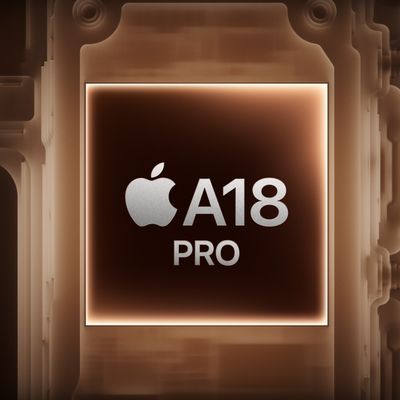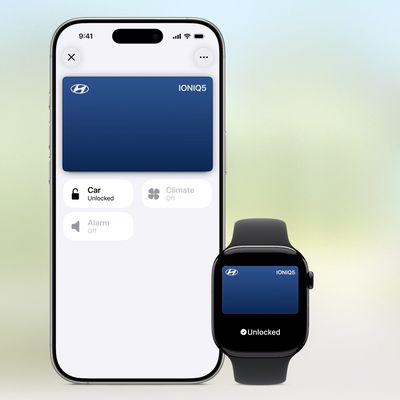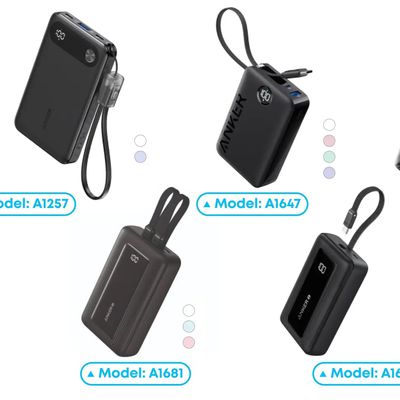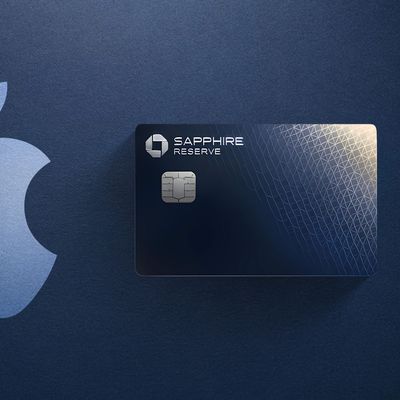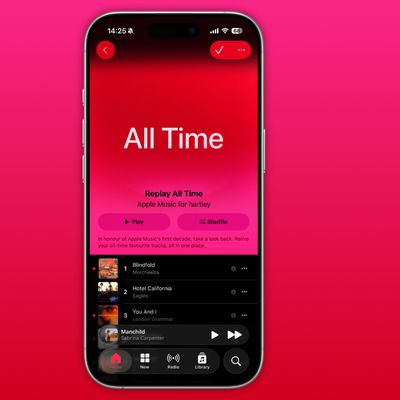Key Claim of Apple's 'Rubber Banding' Patent Used Against Samsung Confirmed
Apple's "rubber banding" patent (U.S. No. 7,469,381) has been under heavy scrutiny in recent months, with a number of claims found invalid in two different rulings.
The patent, which pertains to the ability for content displayed on iOS devices to "bounce back" when a user scrolls to the top or the bottom of a page, is significant because it is one that was successfully used by Apple against Samsung in the ongoing legal dispute that saw Apple awarded with more than a billion dollars.
According to FOSS Patents, Apple has scored a major victory in regards to the '381 patent, having just received notice that the United States Patent and Trademark Office (USPTO) will issue a reexamination certificate that confirms the formerly invalidated claim 19, which was the portion of the patent used against Samsung. In April, three other claims were also confirmed.

As a result of this new reexamination certificate, claim 19 will enjoy an enhanced presumption of validity against the invalidity theories the patent office evaluated. Instead of invalidation in mid–2017 or later, this patent has now been confirmed in mid–2013.
Apple would presumably have liked to salvage even more claims than the seven claims the patent office is now going to confirm, but claim 19 is the one that matters in the dispute with Samsung, and it’s now stronger than ever.
Samsung has, at multiple points in time, attempted to have the rubber banding patent declared invalid and has also attempted to use the question of the patent’s validity as a reason to delay the November trial that will redetermine a portion of the damages that Samsung must pay to Apple after the original $1 billion ruling was partially thrown out due to jury error.
With the new reexamination certificate, it is unlikely that Samsung will be able to delay or avoid the November trial that will levy additional damages against the company.
Popular Stories
Apple's next-generation iPhone 17 Pro and iPhone 17 Pro Max are less than three months away, and there are plenty of rumors about the devices.
Apple is expected to launch the iPhone 17, iPhone 17 Air, iPhone 17 Pro, and iPhone 17 Pro Max in September this year.
Below, we recap key changes rumored for the iPhone 17 Pro models:Aluminum frame: iPhone 17 Pro models are rumored to have an...
Apple is developing a MacBook with the A18 Pro chip, according to findings in backend code uncovered by MacRumors.
Earlier today, Apple analyst Ming-Chi Kuo reported that Apple is planning to launch a low-cost MacBook powered by an iPhone chip. The machine is expected to feature a 13-inch display, the A18 Pro chip, and color options that include silver, blue, pink, and yellow.
MacRumors...
In 2020, Apple added a digital car key feature to its Wallet app, allowing users to lock, unlock, and start a compatible vehicle with an iPhone or Apple Watch. The feature is currently offered by select automakers, including Audi, BMW, Hyundai, Kia, Genesis, Mercedes-Benz, Volvo, and a handful of others, and it is set to expand further.
During its WWDC 2025 keynote, Apple said that 13...
Apple hasn't updated the AirPods Pro since 2022, and the earbuds are due for a refresh. We're counting on a new model this year, and we've seen several hints of new AirPods tucked away in Apple's code. Rumors suggest that Apple has some exciting new features planned that will make it worthwhile to upgrade to the latest model.
Subscribe to the MacRumors YouTube channel for more videos.
Heal...
Apple is planning to launch a low-cost MacBook powered by an iPhone chip, according to Apple analyst Ming-Chi Kuo.
In an article published on X, Kuo explained that the device will feature a 13-inch display and the A18 Pro chip, making it the first Mac powered by an iPhone chip. The A18 Pro chip debuted in the iPhone 16 Pro last year. To date, all Apple silicon Macs have contained M-series...
Popular accessory maker Anker this month launched two separate recalls for its power banks, some of which may be a fire risk.
The first recall affects Anker PowerCore 10000 Power Banks sold between June 1, 2016 and December 31, 2022 in the United States. Anker says that these power banks have a "potential issue" with the battery inside, which can lead to overheating, melting of plastic...
Chase this week announced a series of new perks for its premium Sapphire Reserve credit card, and one of them is for a pair of Apple services.
Specifically, the credit card now offers complimentary annual subscriptions to Apple TV+ and Apple Music, a value of up to $250 per year.
If you are already paying for Apple TV+ and/or Apple Music directly through Apple, those subscriptions will...
As part of its 10-year celebrations of Apple Music, Apple today released an all-new personalized playlist that collates your entire listening history.
The playlist, called "Replay All Time," expands on Apple Music's existing Replay features. Previously, users could only see their top songs for each individual calendar year that they've been subscribed to Apple Music, but now, Replay All...




